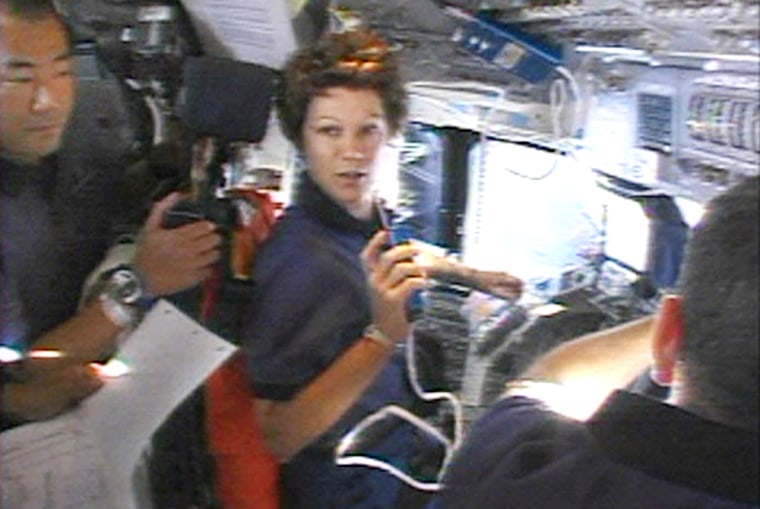Eileen Collins, the unflappable astronaut who charted a groundbreaking career as the first woman to pilot and command a space shuttle, is leaving the U.S. space agency.
Having flown in space four times, Collins said, “We have many astronauts in this office who haven’t even flown one flight. It’s time for me to step aside and give the young guys a chance to fly.”
The 49-year-old astronaut said Monday that she will leave the U.S. space agency in the next week or two and plans to devote several months to her family.
Collins had considered leaving the space agency last year after she fearlessly led NASA’s harrowing first flight in space since the Columbia disaster in 2003. But the death of her mother last December, followed by her father’s sudden death in a traffic accident earlier this year, forced her to push back her departure date so she could finish tying up loose ends from last summer’s mission.
“I had been gone from my family and I sort of want to make it up to them this summer and spend a good summer with my family,” said Collins, the mother of a 10-year-old daughter and 5-year-old son. Her husband is former Air Force pilot Pat Youngs, who flies for Delta Air Lines.
Collins won’t be gone long from the space business. She said she hopes to find a non-NASA job in the aerospace industry in the fall. She hasn’t yet accepted any offers and said she doesn’t know if she would prefer the corporate route or academia.
During her NASA career, Collins was known for her calmness and cool demeanor under pressure. Last July’s mission required Collins to perform a series of unprecedented twist-and-flip maneuvers so the shuttle’s belly could be photographed for damage.
“Eileen is a living, breathing example of the best our nation has to offer,” NASA Administrator Michael Griffin said in a statement. “She is, of course, a brave superb pilot and a magnificent crew commander.”
Collins wasn’t the only key player in the shuttle’s return to flight who announced a retirement Monday. Kennedy Space Center director James Kennedy said he would leave early next year after a 31-year career with NASA. A replacement will be named at a later time.
Named an astronaut by NASA in 1990, Collins became the first female pilot on a space shuttle with the flight of Discovery in 1995, the first mission to rendezvous with the Russian space station Mir.
She also flew on Atlantis in 1997 and became first female commander on the 1999 Columbia flight. That mission sparked keen interest among girls and women and landed Collins in the National Women’s Hall of Fame in Seneca Falls, N.Y.
Collins said she saw herself as a shuttle pilot or commander, not a female trailblazer. “I don’t think of myself as being a woman and having anything to prove,” Collins said in an interview Monday.
But it was different when she went before the public.
“I find as a woman, maybe I can encourage other women to go into this field,” she said. “I think that is really an opportunity that I have that I take seriously.”
Collins grew up in a public housing project in Elmira, N.Y. She used church collections and money from a pizza parlor job to pay for flying lessons. She studied mathematics and economics and Syracuse University and received masters degrees from Stanford University and Webster University.
Collins became the first woman chosen by NASA to be a spacecraft pilot while attending the Air Force Test Pilot School at Edwards Air Force Base in California. She had been a mathematics professor and pilot instructor at the U.S. Air Force Academy and an Air Force pilot instructor at Vance Air Force Base in Oklahoma. She retired from the Air Force in 2005 with the rank of colonel. During her NASA career, she logged more than 872 hours in space.
